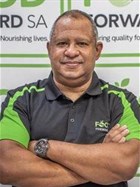Africa faces worst hunger crisis in the world

The report also highlights that Africa is by far the region with the largest percentage of the population facing hunger. “By 2030, 53% of the global population facing hunger will be concentrated in Africa. The prevalence of moderate or severe food insecurity in Africa (58%) is nearly double the global average.”
Furthermore, there is a reversal of progress in terms of meeting the Sustainable Development Goals (SGDs) nutrition targets. “The world is not on track to achieve any of the seven global nutrition targets by 2030. Ensuring healthy diets is key to achieving SDG 2 and a prerequisite for achieving many other goals.”
According to the report, food insecurity and malnutrition in Southern Africa is also deeply concerning, when compared with the global average. While South Africa is often seen as better off than their continental counterparts, severe inequality, the high incidence of malnutrition and deepening food insecurity are prevalent all across South Africa.
According to Stats SA 2023 data, results indicate that out of almost 17,9 million households in SA in 2021, 15% (2,6 million) and 6% (1,1 million) stated that they have inadequate and severe inadequate access to food, respectively. People living in abject poverty are less likely to achieve a healthy diet.
PwC, in their May Economic Update warned that “South Africans are buying less food because of pressure on household finances.” They caution that South Africans are in an economic downward cycle and that we need to ensure that improved nutrition is available to more people.
The UN report has started the challenging work on the creation of financing models to end hunger, food and nutrition security in all its forms. “The countries with the highest levels of food insecurity and multiple forms of malnutrition, and affected by the major drivers of these problems, are the countries with the least access to financing. Estimating the gap in financing for food security and nutrition and mobilising innovative ways of financing to bridge it must be among our top priorities. They are not only an investment in the future, but our obligation.”
While economic recovery following the Covid-19 pandemic has been uneven and disproportionate, with many developing countries’ economies still struggling, we must ensure that financing needed to bridge the gaps is not disproportionate, and that Africa is placed at the centre of the UNs efforts to address food insecurity and malnutrition.

- How Africa's largest food distribution organisation works with researchers to improve operations06 Mar 15:39
- Rising food, fuel, and electricity prices put further pressure on struggling households11 Feb 14:43
- Safe and nutritious food – healthy communities19 Dec 15:18
- Child malnutrition statistics are going the wrong way08 Nov 11:24
- Recognising foodbanks as key stakeholders in solving food insecurity, malnutrition, and climate08 Oct 14:06




